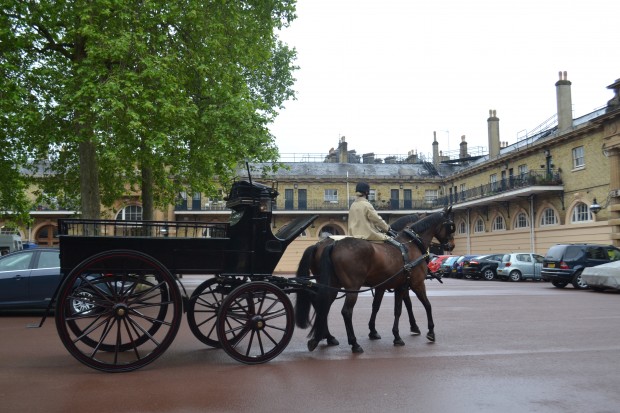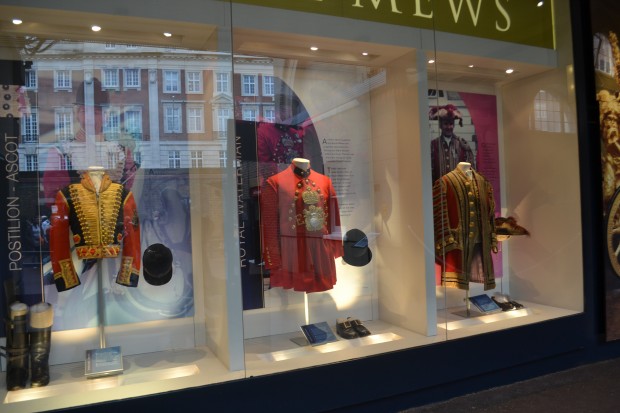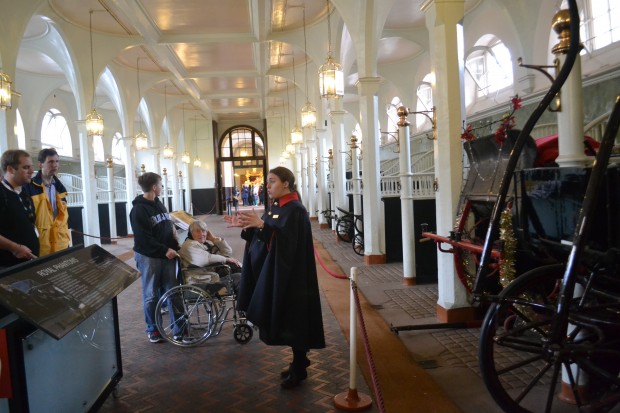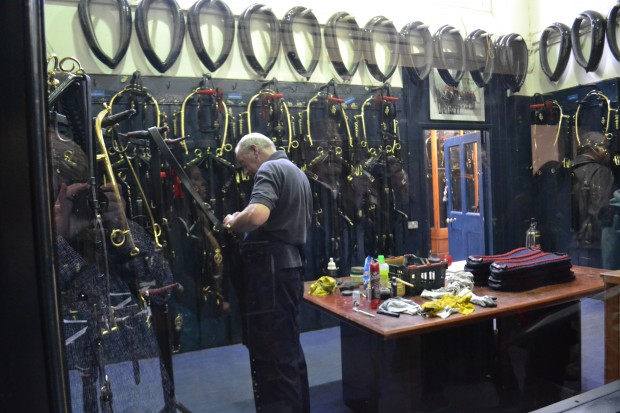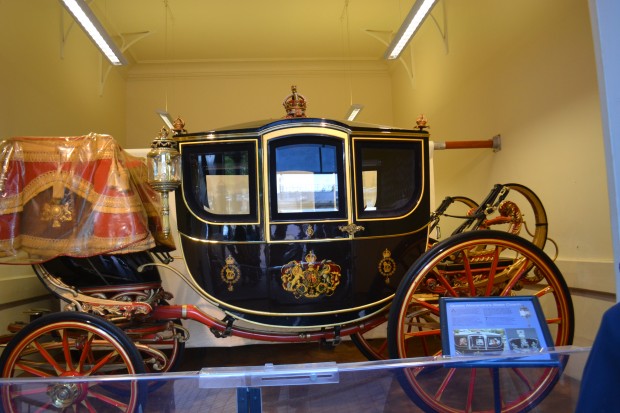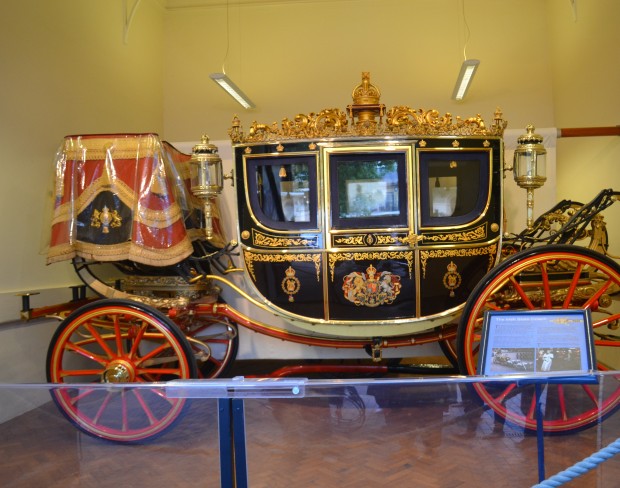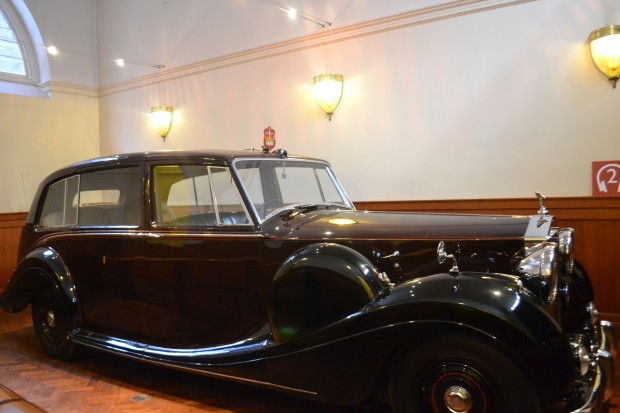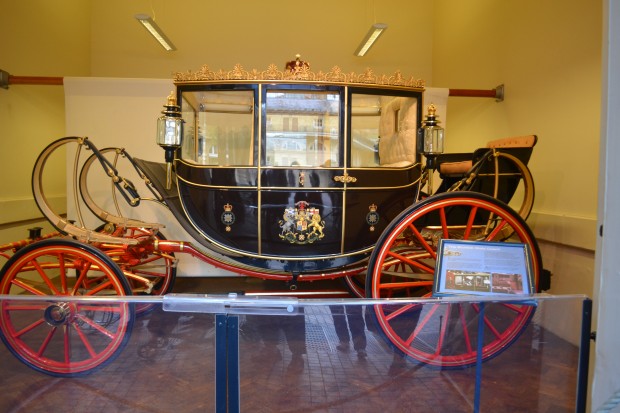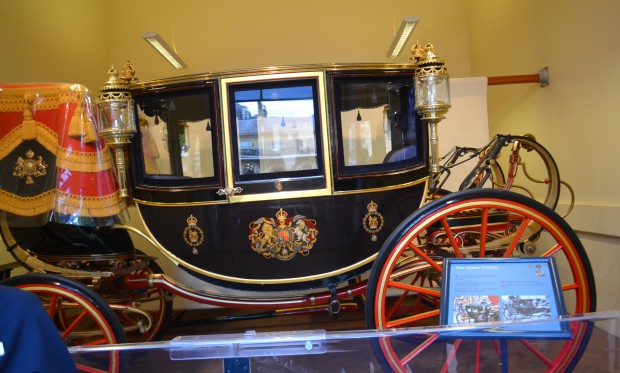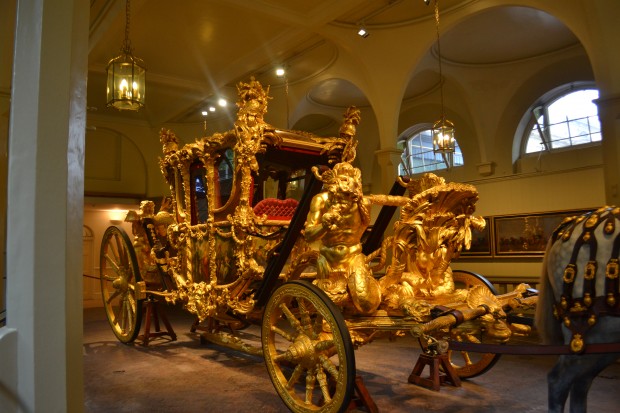
The Royal Mews was directly across from our hotel, The Rubens at the Palace (I just like to write that). The Royal Mews furnishes transportation for The Queen and members of The Royal Family. Sweet Mother of Pearl. It was unbelievable. I loved seeing the Royal Coaches. The working stable is one of the finest stables in the world, and it is part of Britain’s heritage. 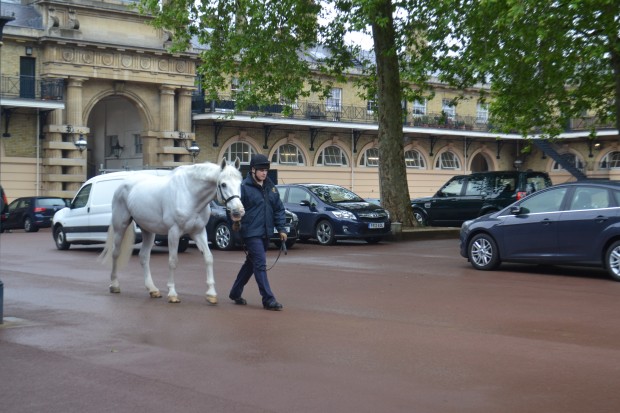
This is a Windsor Grey that pulls the carriages of The Queen and The Royal Family.
The brown Cleveland Bays are also used for other dignitaries. The horses are exercised daily and even taken out on the streets to keep them acquainted with street noises and crowds. Many of the staff of the Royal Mews live in apartments here. They have to be available at a moment’s notice to provide transportation for The Royal Family. Our cute guide mentioned that she would like to live here.
Visitors to the Royal Mews can also see some of the fine livery worn by The Queen’s coachmen. Apart from a few small details, it remains much the same as it was in Victorian times. Remarkably, some of the tailors used for production of liveries today are the same companies employed during the reign of George III in the 18th century. (www.royalcollection.org.uk) Wow!
We had a very knowledgable young guide. This room has all the smaller carriages. The one on the right is used at Christmas time to give rides to children.
It is a working stable.
Queen Alexandria’s State Coach transports The Imperial State Crown. Yes, that is its main function.
It is usually driven four-in-hand by a coachman. Like all the State Coaches it has a variety of uses, but perhaps its best-known regular duty is to convey the Imperial State Crown (together with the Sword of State, the Cap of Maintenance and their respective bearers) to and from the Palace of Westminster for the annual State Opening of Parliament. (In this instance it is always accompanied by The Queen’s Bargemaster and Watermen acting as footmen, a reminder of the days when the Crown Jewels were invariably conveyed from the Tower of London by river for State occasions.) In transit, like the monarch herself, the crown and insignia are entitled to a Household Cavalry escort and receive a royal salute. (Wikipedia) Can you imagine? – A coach that is primarily used to transport the Imperial State Crown.
The Irish State Coach is the traditional horse-drawn coach in which the British monarch travels from Buckingham Palace to the Palace of Westminster to formally open the new legislative session of the UK Parliament.(Wikipedia) It was mentioned that the blue interior of this coach was chosen because it would not clash with any color The Queen would choose to wear.
Three Rolls-Royces and two Bentleys (plus many more cars) are available for The Royal’s transportation. When The Queen is being transported a crown is place on the roof. You can tell an official vehicle because they do not have license plates.
The Australian State Coach is a newer coach that was presented to The Queen in 1988 on the occasion of the Australian Bicentennial. It has electric windows, heating, and air conditioning. The Australian State Coach was used to convey HRH The Prince of Wales, HRH The Duchess of Cornwall and Mr & Mrs Middleton from Westminster Abbey to Buckingham Palace following the wedding of Prince William, Duke of Cambridge and Catherine, Duchess of Cambridge on 29 April 2011. (Wikipedia)
The Glass Coach is used each year on various State occasions, but has most famously been employed at Royal Weddings to convey the bride-to-be to the Church before the service (as was the case with Lady Diana Spencer in 1981). (Wikipedia)
Queen Elizabeth and Prince Philip rode in the Scottish State Coach to the wedding of Prince Andrew, Duke of Cambridge and Catherine Middleton.
But… Drum roll please. Be still my heart!
The remarkable Gold State Coach has been used for every coronation since George IV’s in 1821.
As its name implies, it is covered with gold leaf all over and the exterior is decorated with painted panels. It weighs four tons and requires eight horses to pull it.
It was built for George III (r. 1760-1820). When he first became king, he wanted something special to travel to Westminster Abbey in for his Coronation, and for his wedding to Princess Charlotte of Mecklenburg-Strelitz.
It is enormous: 3.6 metres high, over 7 metres long and 4 tonnes in weight. It is decorated with cherubs, crowns, palm trees, lions’ heads, faces, tritons and dolphins.
In the end, the coach was not ready in time for the Coronation of George III. The first time he used it was when he travelled to Westminster to open Parliament on 25 November 1762. (www.royal.gov.uk)
The Gold Coach is dazzling. It belongs in a fairy tale.
Our guide told us that riding in this coach is very uncomfortable, and its top speed is three miles per hour. Still it is a sight to behold.
Blessings to you and yours,
I did not intend to write an entire post about The Royal Mews, but….
Thank you for reading Lanabird. I love being back. (But I would go again in a heartbeat.)

